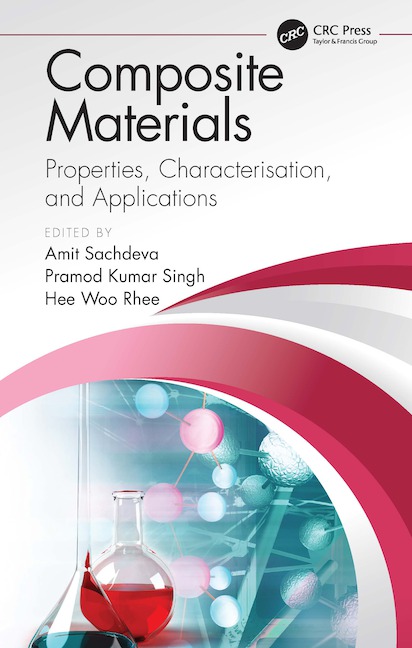Constructing Cleaner Roofing with Anti-Microbial Additives

Roof membranes used in flat to very low-sloping roofs are particularly susceptible to the growth of fungi – such as molds and mildews, as the structural design makes them prone to poor ventilation and accumulation of moisture. Certain common membranes are particularly prone to mold growth. For instance, PVC is a popular and highly versatile membrane material due to its exceptional physical properties, fire resistance characteristics, and excellent cost-performance ratio. In fact, of the 40 million metric tons of PVC produced every year, roughly 70 percent is used within the construction industry. However, flexible PVC contains plasticizers that serve as a source of energy for microorganisms, making them highly susceptible to microbial attack.
Fungal growth can eventually cause structural damage to the roofing materials – including stains and discoloration, odors, and reduced physical strength – creating unpleasant surroundings for building inhabitants and sparking safety concerns. Frequent cleaning can damage the membrane and may shorten the usable lifetime of various roofing components, causing them to be thrown into landfill sooner. Extensive cleaning also consumes water, chemicals, energy and time, creating sustainability concerns and posing a large inconvenience for property owners. Protecting roofing membranes against the growth of fungi is key to mitigating the issue of mold damage and creating a more sustainable product.
Taking Anti-Fungal Protection to New Heights
Active prevention is now recognized as the best defense against fungal growth and premature degradation in building materials, which is why industry professionals are increasingly recognizing the importance of choosing roofing materials containing built-in anti-microbial technologies. These anti-fungal agents can be seamlessly integrated into the PVC polymer matrix of roofing membranes at the point of manufacture to provide around-the-clock protection against the growth of molds and mildews, without negatively affecting the functionality or appearance of the end product. This helps to prevent microbial growth and deterioration that leads to color changes, odors and reduced performance, keeping PVC materials cleaner for longer and extending their usable lifetimes.
In the past, the arsenic-based agent 10,10-oxybisphenoxyarsine (OBPA) was the anti-microbial technology of choice for protecting a wide range of PVC building materials against fungal growth. However, this chemical is highly corrosive, and can leach out of the product into the surrounding environment, causing harm to both terrestrial and aquatic organisms. To make matters worse, this arsenic-based compound is also a recognized carcinogen, posing a risk to human and animal health. Consequently, the EU introduced a total ban on OBPA use in 2016, and it was also added to the REACH restricted substances list, meaning that goods imported into the EU cannot contain this compound. This ban left a significant gap in the anti-microbial space, causing roofing manufacturers to seek safer alternative technologies with improved toxicology profiles.
The Apex of Anti-Microbial Technology
Innovators have responded to this pressing need by developing new anti-microbial products with a reduced environmental impact. One of these revolutionary technologies is MicroGuard™ from Microban International, a line of unique and globally compliant anti-microbial chemistries for materials such as PVC, polyolefins, and PU and EVA foams. MicroGuard is effective against a variety of fungal species. The technology relies on highly effective non-metal compounds that prevent cell microtubule structures from forming, as well as disrupting enzyme activity to block metabolic pathways, ultimately leading to fungal cell death. MicroGuard is available in both masterbatch pellet and liquid formulations, and can easily be incorporated into PVC, EPDM and TPO roofing membranes during the manufacturing process, becoming an innate part of the material that works 24/7 to help keep surfaces clean. This means it will not wear off or leach out over time, reducing ecological concerns for enhanced sustainability. Additionally, MicroGuard is already registered with the U.S. Environmental Protection Agency and notified with the EU Biocidal Products Regulation, illustrating the positive regulatory background of this revolutionary antifungal solution and its ability to provide reassurance for suppliers, contractors and property owners.
The performance of a MicroGuard liquid formulation was assessed using the AATCC 30-III test method against Aspergillus niger (A. niger), and the ASTM G21 test method against a mixture of five different fungal species. In the AATCC 30-III test, PVC plaques were placed onto nutritive agar plates, inoculated with a high concentration of A. niger spores, and incubated for seven days at 28±1 °C and high humidity – optimal conditions for fungal proliferation. The extent of growth on the plaques was then rated on a scale of 0 to 2 (Table 1).
TABLE 1 | AATCC 30-III test result key.
0: No Growth
1: Microscopic growth (visible under a microscope)
2: Macroscopic growth (visible to the naked eye)
During the ASTM G21 test, PVC plaques were placed onto a non-nutritive agar, inoculated with a mixture of five different organisms, and incubated for 28 days at 28 °C and high humidity. Without added nutrition, fungi must use the substrate material as their food source to survive, so this test method enables the evaluation of a specimen’s ability to resist fungal attack at the point of its final application. After the full exposure time, the plaques were examined under a microscope, and rated on a scale of 0 to 4 according to the percentage of the plaque surface covered by fungal growth (Table 2).
TABLE 2 | ASTM G21 test result key.
0: No growth
1: Traces of growth (<10 %)
2: Light growth (10-30 %)
3: Medium growth (30-60 %)
4: Heavy growth (60-100 %)
All plaques treated with MicroGuard received a score of 0 in both the AATCC 30-III and ASTM G21 tests. In contrast, the untreated PVC samples received a score of 2 and 4 during the AATCC 30-III and ASTM G21 tests, respectively, indicating heavy fungal growth on the plaques that did not contain MicroGuard.
Building a More Sustainable Future
Anti-microbial chemistries hold much promise for tackling the persistent problem of mold and mildew growth on roofing materials, keeping them cleaner for longer and, consequently, enhancing product longevity and reducing the amount of wastage entering landfill. Built-in product protection with a more favorable toxicity profile also provides contractors and property owners with valuable reassurance and peace of mind regarding their safety. With the EU ban on OBPA, it is now even more important that manufacturers work with trusted partners such as Microban International to incorporate novel non-metal antimicrobial agents into their roofing components to support the industry-wide move toward sustainability.
Looking for a reprint of this article?
From high-res PDFs to custom plaques, order your copy today!









